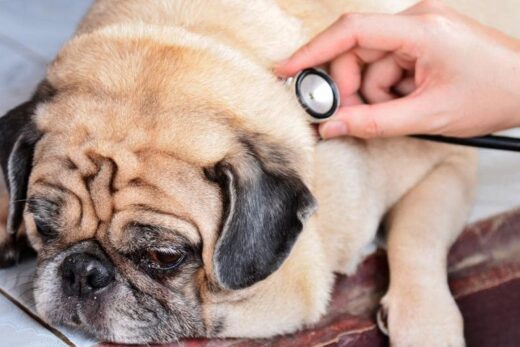You’d be forgiven for thinking squirrels are public enemy number one, but it is in fact obesity. Having a fat dog is more common than you’d think, with vets confirming that 51% of them are overweight or obese in the UK. Carrying excess weight negatively impacts our dog’s lifespan as well as making them more prone to developing diseases. For instance, overweight dogs are at an increased risk of developing diabetes, cancer, and suffering from heart disease.
Today we’re exploring how to use a dog weight chart to identify if your dog is the ideal weight. Or if not, how you can help your dog enjoy a healthy, long adventurous life.
Why is the number of fat dogs on the rise?
1. Fat dogs are the norm
Just as we’ve seen a rise in human obesity, our dogs have followed suit. Unfortunately, and worryingly for our pet’s health, this has resulted in it being somewhat normalised, and has made it harder for owners to know what a healthy dog weight really looks like.
2. Many of us don’t admit our dogs are overweight
A second factor that’s driving obesity is our sheer refusal to admit to there being a problem. We love our dogs and would do anything for them, which is why it can be difficult for us to accept that your dog is obese or overweight. The PFMA found that just 8% of pet owners admitted their pets needed to lose some weight, which sits in stark contrast with the 51% of dogs that vets think are overweight or obese.
3. Overfeeding, excessive ‘treating’, and not following feeding guidelines
Dog treats or food tends to be seen as a way to show our love or affection, especially to our foodie fur babies. We’ve become a nation of free feeders and overgenerous treaters, which is having a disastrous impact on our pets’ wellbeing, not to mention their waistlines. As well as feeding dog food and dog treats, more than 1 in 5 of us admit to feeding table scraps. Human foods can be full of salts, sugars, or harmful ingredients for our pooches, and can lead to pancreatitis in dogs.
4. Lack of exercise
Like us, our doggies aren’t getting enough exercise. The PDSA reports that more than a million dogs are not getting a daily walk. Not only does this have an impact on our dog’s weight, but on their mental wellbeing too.
Risks associated with having a fat dog
Being overweight or obese has potentially severe risks for our pups. Not only does obesity reduce their quality of life, but it increases the risk of certain diseases. The most prevalent being arthritis, breathing difficulties, heart disease, Type 2 diabetes, and even certain types of cancer. For all these reasons obesity can sadly reduce dogs’ lifespans by up to 2.5 years. Something we know sends a shiver down any pet parent’s spine.
How to know if your dog is the ideal weight?
The best way to identify if you have a fat dog or if they are at their ideal weight is by doing a Body Condition Score or using a Dog Weight Chart.





